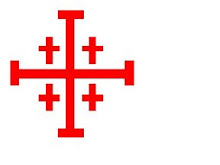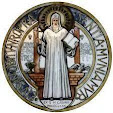For me one of the best approaches to the nature of the Church comes with this dynamic image from Henry Suso: This is drawn from the account of a vision that a follower of Suso shared with him.
God once revealed this to a chosen friend of God. Her name was Anna, and she was his spiritual daughter. Once in her devotions, she went into an ecstasy, and she saw
 the Servant saying Mass on a high mountain. She saw an immense host of persons living in him and attached to him. But all were not in the same position: the more each had of God in him, the more they lived in the Servant also; and the more closely they were united to him, the more God had turned to them. She saw how fervently he prayed for them to the eternal God, whom he held in his priestly hands; and she asked God to explain to her what this vision meant. Thereupon God answered her thus: “The vast number of these children who cling to him are all the people who are taught by him, who listen to him, confess to him, or are devoted to him in any other way with special affection. He drew them to me in such a way that I will bring their lives to a good end, and see that they are never to be separated from my joyous countenance. But whatever sufferings may befall him as a consequence of this, he shall be well rewarded by me.”[1]
the Servant saying Mass on a high mountain. She saw an immense host of persons living in him and attached to him. But all were not in the same position: the more each had of God in him, the more they lived in the Servant also; and the more closely they were united to him, the more God had turned to them. She saw how fervently he prayed for them to the eternal God, whom he held in his priestly hands; and she asked God to explain to her what this vision meant. Thereupon God answered her thus: “The vast number of these children who cling to him are all the people who are taught by him, who listen to him, confess to him, or are devoted to him in any other way with special affection. He drew them to me in such a way that I will bring their lives to a good end, and see that they are never to be separated from my joyous countenance. But whatever sufferings may befall him as a consequence of this, he shall be well rewarded by me.”[1]The image is an uncomfortable one for modern Christians but well worth wrestling with. One of the weaknesses of the contemporary Church is that we have lost a mysterious and mystical appreciation for the nature of priesthood. Suso is being drawn up to heaven in a slow and graceful spiral and those who are attached to him ascend with him in a spiraling motions and mass that expands in circumference from top to bottom. The image is dynamic, in full motion, as the priest throughout his ministry in Christ and through the Spirit is drawn up into heaven. The action starts at the altar as the priest in the midst of his flock lifts high the cup of salvation and calls upon the Name of the Lord. It is a eucharistic action. “The cup of blessing that we bless, is it not a koinonia in the blood of Christ? The bread that we break, is it not a koinonia in the Body of Christ? Because there is one bread, we who are many are one bread (I Corinthians 10:16-17). Priest and people, one blood, one body, ascend together with Christ in the Spirit.
But this is not an isolated act; for the priests ascends thus in company with other faithful priests each attached to the Bishop at his altar: each Bishop historically and actually connected with all faithful Bishops throughout time, each now and throughout the centuries believing what has been believed always, everywhere and by all. This living divine strand of tradition reaches beyond the politically complicated “first among equals”’ at Canterbury. It predates the actual primacy of Rome which has always been debated in the truly catholic Church. This living strand of tradition reaches into the early apostolic Church as it reaches out to the many places in the ancient world. It is hard however to connect it with disconnected Protestantism. There is a grace of the Spirit clearly operative in the disconnect, but the disconnect is needlessly perilous.
 Apostolic succession is often misunderstood as though it were a magical passing along of authority and position through the laying on of hands. Grace must be received to be effectual. There are clear biblical blocks that prevent grace from becoming effectual. Among those blocks are heresy in the doctrine of Christ, unholiness in life, and failure to love the brotherhood. Those blocks are clearly present in the hierarchy of The Episcopal Church.
Apostolic succession is often misunderstood as though it were a magical passing along of authority and position through the laying on of hands. Grace must be received to be effectual. There are clear biblical blocks that prevent grace from becoming effectual. Among those blocks are heresy in the doctrine of Christ, unholiness in life, and failure to love the brotherhood. Those blocks are clearly present in the hierarchy of The Episcopal Church. Note that it is also possible for one to become apostate, or at least for inherent apostasy to become finally manifested for all to see. It is foolish to think that God would actually bless apostasy, or to think that an apostate could have a legitimate place in the apostolic succession. God speaks his frightening word, “You thought that I was like you.” That lets out a few popes but it also lets out a score of Episcopal and Anglican bishops. The indelibility of priesthood says its not the man but the sacrament and the faith of the people. In those cases the man, or woman is a void, a nothing, and God in his grace anoints others or skips a generation or two but that doesn’t mean that he abandons his faithful remnant in the Church. At times like these the Protestant disconnect is a rebuke to apostolic succession, a possible means of grace, even a saving grace, but still not God’s first choice.
[1] Henry Suso, The Life of the Servant: The Way of Suffering and of the Cross, Chapter XXII.

